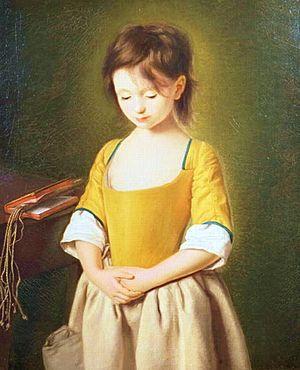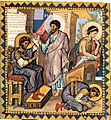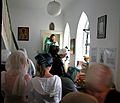Penance facts for kids
Penance is about saying you are sorry for things you have done wrong. It is also the name of a special ceremony in the Catholic Church called the Sacrament of Penance and Reconciliation, or Confession. The word penance comes from a Latin word that means "to be sorry" or "to want forgiveness."
This sacrament, also known as penance or confession, is a way for people to be forgiven for their sins. Sins are things people do that go against God's rules. When people receive this sacrament, they are brought closer to God. It helps their soul feel better because their sins are taken away. It also brings many blessings to the person who receives it.
Contents
What is the Sacrament of Reconciliation?
The Sacrament of Reconciliation is a special way for Catholics to tell God they are sorry. It helps them fix their relationship with God after they have done something wrong. This sacrament is also called Confession or Penance.
How Does Confession Work?
When someone wants to go to Confession, they meet privately with a Catholic priest or bishop. They tell the priest the sins they have committed. No one else hears what is said. This is a very private conversation.
After telling their sins, the person says a prayer. This prayer shows they are truly sorry for what they have done. Then, the priest says a special prayer to forgive their sins.
How Often Can You Go?
Catholic people can go to this sacrament as often as they feel they need to. Every Catholic must go to Confession at least once a year.
Privacy in Confession
Priests who hear confessions are not allowed to tell anyone what they hear. This is a very strict rule. It means everything said in Confession stays secret. If other people happen to hear parts of a confession, they also must keep it private.
Images for kids
-
The reproach of Nathan and the penance of King David (Paris Psalter, folio 136v, 10th century).
-
Russian Orthodox priest hearing confessions before Divine Liturgy
-
A confessional in Luther Church (Helsinki, Finland)
-
David is depicted giving a penitential psalm in this 1860 woodcut by Julius Schnorr von Karolsfeld.







